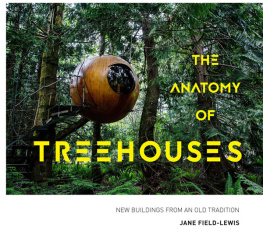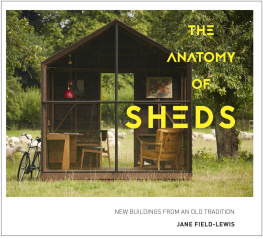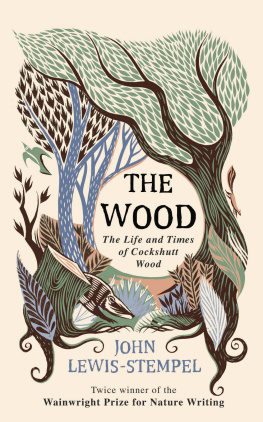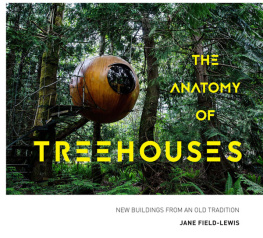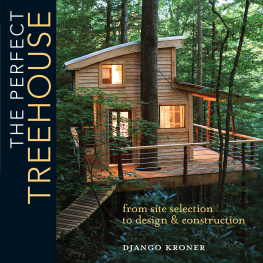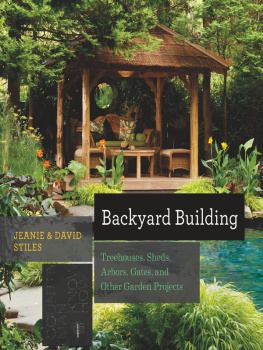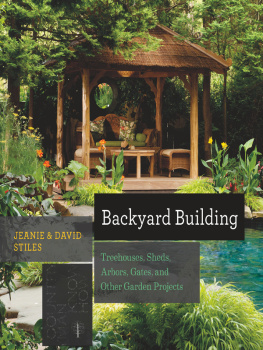Contents
Guide



First published in the United Kingdom in 2018 by
Pavilion
43 Great Ormond Street
London WC1N 3HZ
Copyright 2018 Pavilion Books Company Ltd
Text copyright 2018 Jane Field-Lewis
This book can be ordered direct from the publisher at
www.pavilionbooks.com
All rights reserved. No part of this publication may be copied, displayed, extracted, reproduced, utilised, stored in a retrieval system or transmitted in any form or by any means, electronic, mechanical or otherwise including but not limited to photocopying, recording, or scanning without the prior written permission of the publishers.
ISBN 978-1-91162-434-9
A CIP catalogue record for this book is available from
the British Library.
CONTENTS
INTRODUCTION
Craftsmanship names an enduring, basic human impulse, the desire to do a job well for its own sake. (Richard Sennett, The Craftsman)
The treehouse is a seemingly contradictory structure that embodies an intoxicating freedom as well as snug security. The tangle of the quixotic and the adventurous, along with independence and safety, is compelling. Treehouses give us the luxury of our own unique vantage point but safely cocoon us, too. In reality, the dangers of predators are rare, be they woodland animals or a growling cityscape, but we still value the virtue of perceived safety that this arboreal build provides. Thrillingly, we can all possess our very own ladder, our own little journey, and the fantasy of ascending and descending in our own uniquely formed treehouse haven. And high up in our treehouse world, we can experience the feeling that we are not always earthbound. The inference is that the connection is fragile and we can pull up the ladder any time we so desire and chameleon-like, camouflage or, indeed, physically isolate ourselves from a chaotic world below.
Occupying the space in a treehouse, albeit fleetingly, feels both personal and spiritual. Perhaps we are drawn to it by those qualities that evoke our own inner journey: the private and puzzling communion between the conscious and unconscious, our own inner temple and place of refuge. By allowing this mysterious zone to surface, we may feel that we can boldly experiment with the appearance of the structure. We are the temporary custodians of a small patch of earth and, in the case of the treehouse dreamer, a little chunk of sky. A treehouse pioneer is no less ambitious a stake is placed in the sky and a trunk is fashioned or found.
The possession of an actual tree and leafy canopy is not a prerequisite for a treehouse free-standing structures on stilts can also perfectly assimilate its qualities. A treehouse does not necessarily have to be exclusive to individuals who have the luxury of owning a sturdy enough and structurally obliging tree. In this collection of treehouses and their stories, I have not confined myself to the fairy-tale woodland aesthetic but have tried to be open-minded. An urban treehouse with a tangled line of rooftops and stilt foundations has as much authenticity as one thats enfolded in foliage with a trunk that will bear our weight. It is not the case that a sleek and modern build which has drawn inspiration from every facet of a treehouse, but without the foundation of a physical tree, is less deserving of our attention. In many ways, structural engineering solutions have provided satisfying environmental answers that respect the tree without necessarily welding ourselves to it and expecting it to take the strain.


There is also a quiet architectural revolution happening in which exciting new builds are being photographed gleefully by amateurs and professionals alike, and ideas are disseminating rapidly. The attraction of small-scale builds has exposed a new egalitarianism; they provide a solid and credible design expression that allows all to be on the same footing. The spirit of the treehouse emboldens us further as we psychologically harness the unique imprint of a tree skeleton, we allow ourselves to be experimental and courageous with our design and not be cajoled into mass-produced uniformity. Equally, a celebration of the bespoke and natural materials is raising the profile of the craftsman. The woodworker is leading the way forward in this respect; a treehouse project is perhaps the perfect expression, manifestation and test of his skills and knowledge.
A satisfying line of enquiries emerged as I delved deeper into the research and specific people were repeatedly mentioned as key sources of influence. To cite a few: John Makepeace, a respected English furniture designer, who has trained several of the craftsmen working in wood whose treehouses are included in this book; Tom Chudleigh, a visionary figure who has created spherical tree structures in the United States; Andreas Wenning from Baumraum in Germany, who developed modernist, sleek treehouses that celebrate the architect and structural engineer as well as the designer; and Simon Parfett from Bower House Construction in the United Kingdom, an ingenious craftsman in wood who has influenced the modern rustic aesthetic in treehouse design. My selection of treehouses encompasses many forms, designs and aesthetics, from the grander model to the modest they are all unique, but the people behind them all share the same desire to create something bespoke and personal and fulfil a goal, ambition or dream.
This book owes a great debt of gratitude to all these brilliant individuals and their collaborators who were happy to share their vision with us. Its also a recognition that skills in design, architecture and craft are not amassed; rather, they are quietly hard-won and cultivated and most of them without celebrity fanfare. In curating this selection of treehouses, I have tried to hold up my own tenets of design. Its about not conforming just to your personal design aesthetic but relishing the challenge and following your own journey with a tenacity, generosity and spirit of adventure. This book has been my favourite to write so far and I hope you enjoy reading it and looking at the wonderful images.

THE
WOODSMAN
The amazing treehouses in this chapter embrace the dialogue between man and wood. The love of the tree underpins them all. The woodworker, with his in-depth knowledge of his materials, is paramount in this process. The qualities of the individual woods and the available resources and skills have all been hugely respected, the right tools used and every last scrap carefully hewn into handmade shingle, batten rope bridges and roof tiles.

